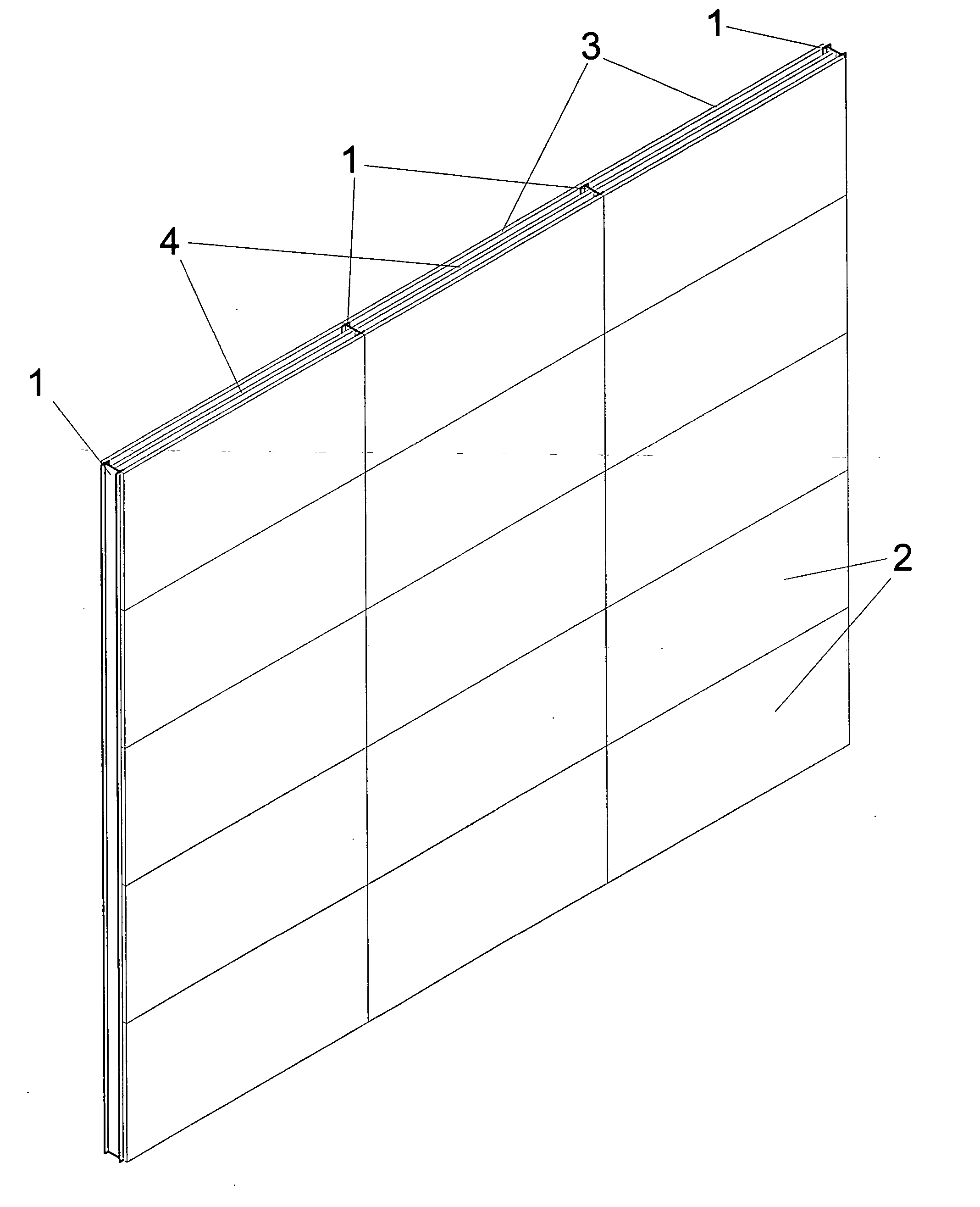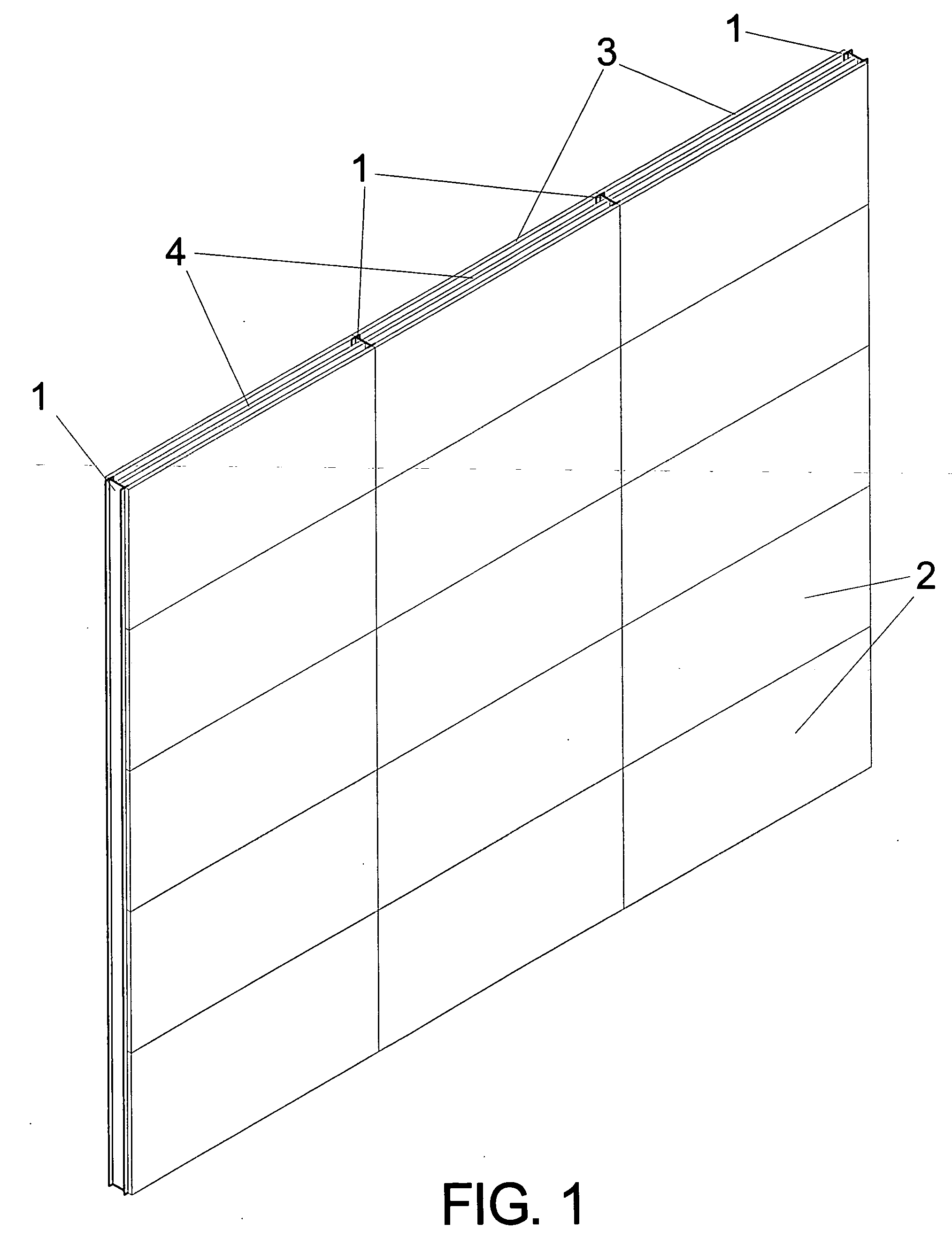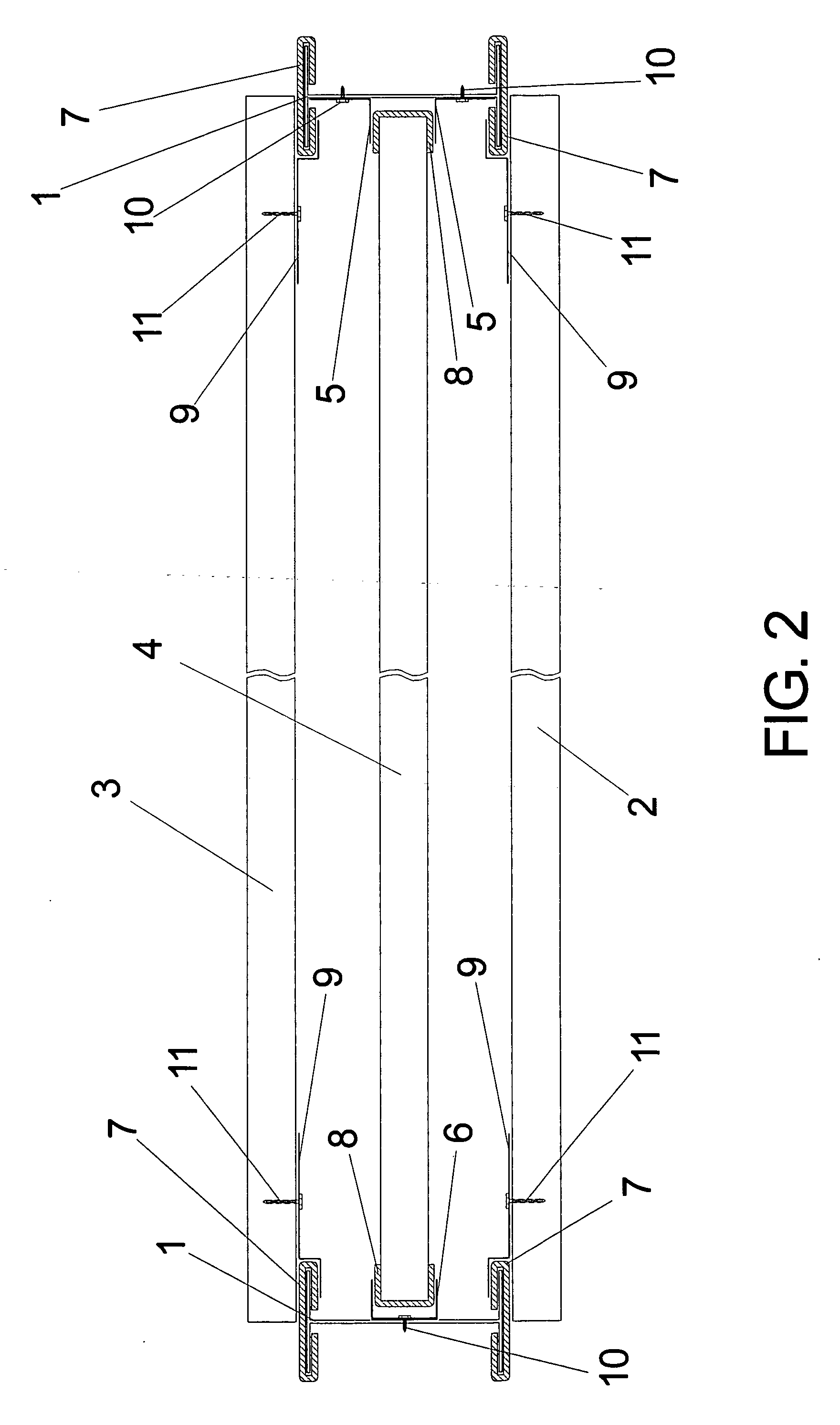Acoustic wall using compressed fiber panels
a technology of compressed fiber panels and walls, applied in walls, construction, building components, etc., can solve the problems of less than optimal construction, and acoustic short circuits around resilient channels negating the full effect, so as to improve acoustics and eliminate easy burn through areas
- Summary
- Abstract
- Description
- Claims
- Application Information
AI Technical Summary
Benefits of technology
Problems solved by technology
Method used
Image
Examples
Embodiment Construction
[0025] The improved construction disclosed herein includes a number of individual components, but is generally designed around a compressed straw panel. In the preferred embodiment, compressed straw panels such as those manufactured by Durra Building Systems of Texas are used. Each compressed straw panel is composed of highly compressed straw, typically wheat, rice, oat or other recovered agricultural straw lined on all exterior sides by paper or paperboard. Compressed straw panels are typically made through a dry extrusion process wherein straw is compressed into a substantially flat continuous web, normally between 1″ and 3″ thick and between 30″ and 65″ wide. As previously mentions, the continuous web is lined on all sides by paper or paperboard. The continuous web is then cut into rectangular panels of various lengths. FIG. 5 is an isometric composite view of a simple compressed straw panel 2 showing the compressed straw fibers 12 and the paperboard liner 13. The compressed stra...
PUM
 Login to View More
Login to View More Abstract
Description
Claims
Application Information
 Login to View More
Login to View More - R&D
- Intellectual Property
- Life Sciences
- Materials
- Tech Scout
- Unparalleled Data Quality
- Higher Quality Content
- 60% Fewer Hallucinations
Browse by: Latest US Patents, China's latest patents, Technical Efficacy Thesaurus, Application Domain, Technology Topic, Popular Technical Reports.
© 2025 PatSnap. All rights reserved.Legal|Privacy policy|Modern Slavery Act Transparency Statement|Sitemap|About US| Contact US: help@patsnap.com



